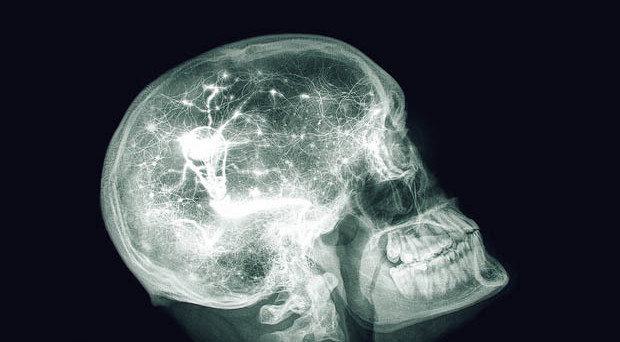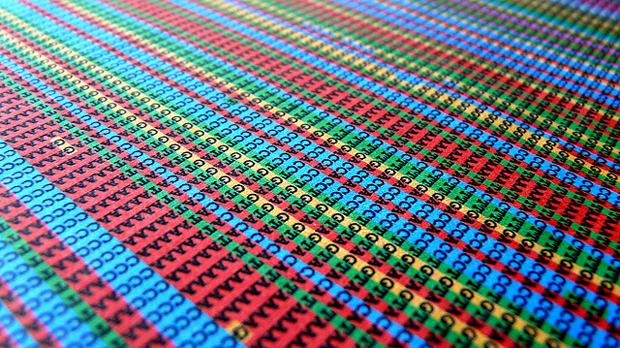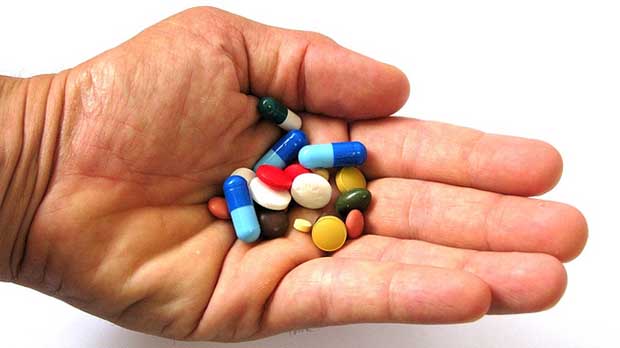
Seven months ago we set about finding the biggest challenges in cancer research.
 The world’s best scientific minds worked together with patients to settle on the major hurdles that need to be tackled to transform the way we prevent, diagnose and treat cancer.
The world’s best scientific minds worked together with patients to settle on the major hurdles that need to be tackled to transform the way we prevent, diagnose and treat cancer.
The result is these 7 questions. And our ambitious Grand Challenge award will help find the answers through £100 million of funding for teams of international researchers.
So what are they?
1. Can we develop vaccines to prevent cancers not caused by viruses?
Research that unleashes the full force of the immune system on tumours is changing the face of cancer treatment.
But what if the immune system could do more?
Vaccines help us stave off viral infections that were once lethal to our ancestors. And we now know that some cancers are also caused by viruses, triggering life-saving research into vaccines that can treat these diseases and prevent others too (more on this below).
But this question is different. What if we could develop vaccines to prevent cancers in healthy people that aren’t caused by viruses?
A vaccine like this would need to tell the immune system to keep watch for, and eliminate, rogue cancer cells at their earliest stages of development.
A vaccine like this would need to tell the immune system to keep watch for, and eliminate, rogue cancer cells at their earliest stages of development.
To do this, we’ll need to learn a lot more about the complex ways the immune system spots cancer cells. And understand in more detail how cancer can dodge immune detection.
So, our first Grand Challenge is to: develop vaccines to prevent non-viral cancers.
2. Can we eradicate cancers caused by the Epstein Barr Virus?
Of the viruses that cause cancer, the Epstein Barr Virus (EBV) has emerged as one in need of global attention.
Following work in Africa on a type of lymphoma, EBV was uncovered as the first virus that can cause cancer in humans. Infection with this virus has been linked to increased rates of cancers found at the back of the nose and throat in China and South East Asia. And it’s also responsible for some stomach cancers, and a second type of lymphoma.
Collectively this adds up to an estimated 200,000 new cases of cancer worldwide each year, and more than 140,000 deaths.
So what if we could eliminate these cancers?
To do this, researchers will need to take on EBV from every angle. We’ll need vaccines that can prevent the infection in those who haven’t been exposed, as well as ways to target cells that are already infected.
This could involve different vaccines to treat cancers caused by the virus – some of which are already being developed. And even drugs that could kill infected cells, or those that have already become cancerous.
So, our second Grand Challenge is to: eradicate EBV-induced cancers from the world.
3. Can we prevent cancers by studying the ‘scars’ that carcinogens leave in our DNA?

Whether it’s the chemicals in tobacco smoke, or UV damage from the sun’s rays, carcinogens leave ‘scars’ in a cell’s DNA – something researchers call a signature. Each carcinogen is different, marking our DNA in diverse ways. And it’s these genetic faults that may go on to trigger uncontrolled cell growth and cancer.
The traditional approach to uncovering these genetic signatures has been to study groups of people with higher cancer rates, and look for differences in their genetic code.
But what if we could work the other way around, starting with a tumour’s genetic code and finding new faults linked with different causes of cancer? Could this information then be turned into new ways to prevent cancer by knowing the signatures to look out for?
We know very little about the genetic damage caused by things like obesity and varying levels of physical activity, to name just two growing health issues. And with these complex problems, it’s likely that there will be many different signatures that need untangling before we can find out how to tackle them.
So, our third Grand Challenge is to: discover how unusual patterns of mutation are induced by different cancer-causing events.
4. Can we spot the potentially lethal cancers that need treating, and non-lethal ones that don’t?
This question brings together two challenges that are poles apart. Some changes in the body we call ‘cancer’ don’t actually need any treatment, while there are other aggressive tumours that we aren’t spotting early enough.
Prostate and breast cancers can be diagnosed early, but in some cases the tumours detected through tests or screening won’t go on to cause any harm to the patient. But we can’t always tell which these are. So some patients are having unnecessary treatment, which also means unnecessary side-effects.
On the flipside, we don’t have reliable ways of detecting cancers such as lung, brain, pancreatic or ovarian cancers, which can be particularly aggressive and need urgent treatment.
So what if we could tell the difference between potentially lethal and non-lethal cancers, and turn this into more accurate ways of diagnosing them?
To do this, researchers will need a precise understanding of the biological differences between lethal and non-lethal tumours. Once they have this knowledge we’ll need to know if it can be turned into new ways of spotting these cancers.
For example, we need to find out if there are tell-tale molecules or faulty bits of DNA released into the bloodstream or urine that could be detected with new technology.
So, our fourth Grand Challenge to: distinguish between lethal cancers that need treating, and non-lethal cancers that don’t.
5. Can we make a ‘Google Street View’ for cancer?
We need to do more than just study cancer cells. There is a whole ecosystem of tissues, cells, proteins and molecules out there that support every tumour.
This ecosystem is called the tumour microenvironment, and it’s a bit like a city. It’s built from different types of cells, with structural molecules and proteins for support. There are blood vessels that act like roads into the tumour, supplying nourishment to keep the cells growing. And these tumour roads even serve as escape routes for cancer cells that spread to other parts of the body.
But while we know this world exists, we don’t really understand how all the components interact. It’s a bit like trying to follow the plot of a film by only looking at a handful of photographs.
It would help scientists find new ways to monitor the dangerous neighbourhoods inside tumours and shut them down.
So what if we could develop an interactive 3D map of all the different parts of the city and how they work? This would be the ‘Google Street View’ for cancer. And it would help scientists find new ways to monitor the dangerous neighbourhoods inside tumours and shut them down.
To do this, researchers will need to take a completely new approach. They will need to find ways to study the city as a whole, not break it down into individual components as we have done before.
So, our fifth Grand Challenge is to: find a way of mapping tumours at the molecular and cellular level.
6. Can we target the cancer ‘super-controller’ MYC?
The MYC gene has been a wily foe for researchers since its discovery in the early 80s.
It’s a gene that tells cells to multiply, and is faulty in almost seven out of 10 cancers. And these faults lead to relentless signals telling cancer cells to keep dividing. So attempts to switch off faulty MYC have been the focus of huge amounts of research.
But these studies have shown that the protein produced by the MYC gene is a tough molecule to target with drugs, and we need a new approach.
So what if experts from diverse scientific disciplines could bring some fresh ideas to the table and finally crack the challenge of MYC?
Because MYC works differently to other cancer drug targets, researchers need to understand its shape and how it sticks to other proteins. Interfering with these sticky interactions is notoriously difficult, but progress in targeting other so-called ‘undruggable’ molecules suggests now is the time to try.
So, our sixth Grand Challenge is to: develop innovative approaches to target the cancer super-controller MYC.
7. Can we kill cancer cells in patients using new ‘smart drugs’?

New technology has allowed scientists to engineer smarter cancer drugs that can precisely target and kill tumour cells in the lab. But just doing this in the lab isn’t good enough.
These drugs can use specialised bits of DNA, proteins and other molecules to home in on ‘red flags’ that make these lab-grown cancer cells unique. But the real challenge comes when trying to get these experimental treatments to reach the tumour cells in patients.
So what if we could find innovative new ways to deliver these ‘smart drugs’ to all cells in the body, but only kill the cancer cells?
To do this, researchers will need to find a way to exploit how traditional drugs reach lots of cells in the body, and find ways to apply this to these newer experimental treatments. Once inside the cells, the drugs would only kill the cancer cells by targeting something unique to the tumour.
This is potentially one of the biggest hurdles facing researchers, but there’s so much to gain if it works.
So, our seventh Grand Challenge is to: deliver biologically active macromolecules to any and all cells in the body.
Hi , Thanks for the “The 7 questions we must answer to beat cancer” blog. This blog helps to understand about the Cancer. My uncle is Suffering from prostate cancer from 2 month currently he is on treatment. But we are looking for advanced and best treatment. Thanks for this post.